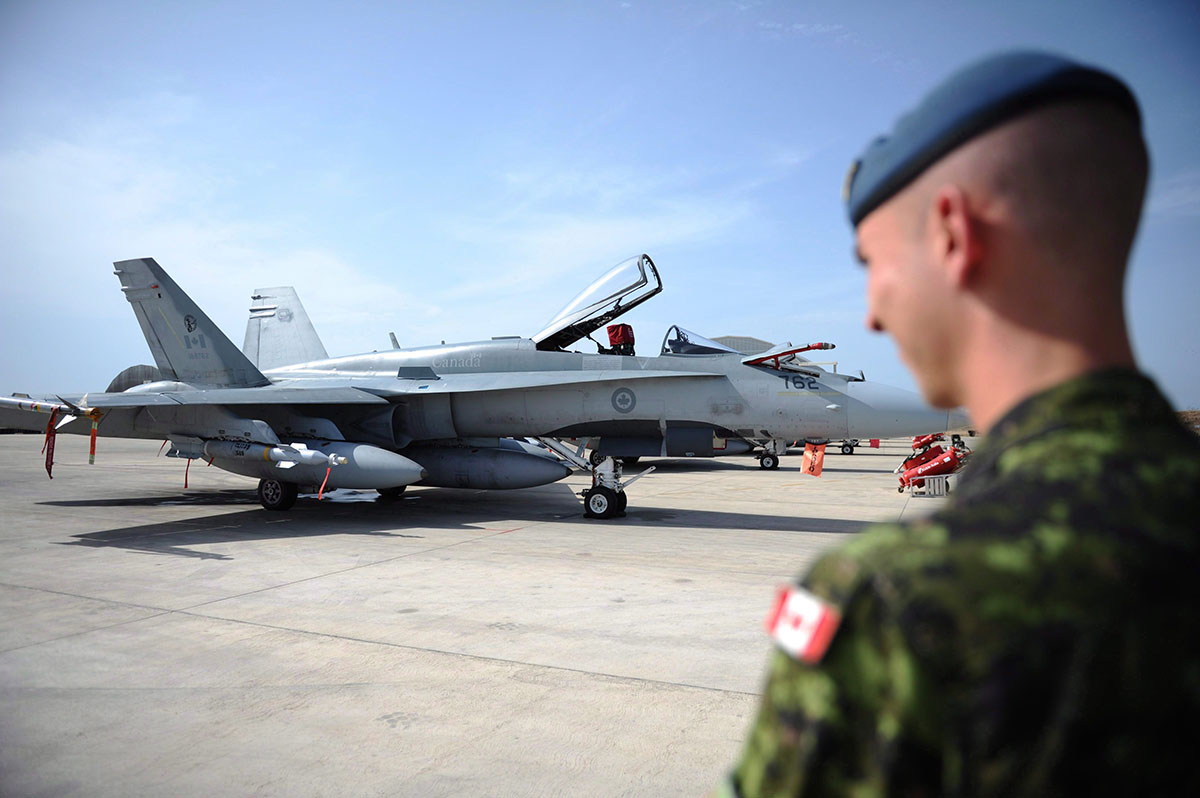OTTAWA – Eight Canadian fighter jets have been deployed on a massive training exercise in the Pacific, despite Liberal government warnings the country does not have enough such aircraft to defend North America and fulfill its obligations to NATO.

The government says the month-long exercise is critical for training Canadian fighter pilots to work alongside allies – and the planes will return to Canada immediately if they are needed.
But the Conservatives say their involvement proves Liberal claims of a fighter-jet shortage aren’t true.
The eight CF-18s arrived in Hawaii at the beginning of July as part of Canada’s contribution to the Rim of the Pacific Exercise, or RIMPAC, which has been billed as one of the largest military exercises in the world. Canada is among 27 countries participating in the U.S.-led exercise, which takes place every two years.
READ MORE: Canada and NATO: Details on Eastern Europe military commitments
The fighter jets are expected to remain in the region until July 29. Canada also has four naval ships, six helicopters, two refuelling aircraft, a surveillance plane and more than 1,500 military personnel participating in RIMPAC.
Defence Minister Harjit Sajjan’s spokeswoman, Jordan Owens, said the air contingent is the largest ever for Canada in the Pacific. The exercise gives Canadian pilots the opportunity to operate together and also to work alongside counterparts from traditional and non-traditional allies throughout the Pacific region, she said.
WATCH: Sajjan blames Conservative in-action for fighter jet procurement crisis

“We need to train pilots, and they have this opportunity to train with more than 20 other countries,” Owens said. “This is essential for having a combat-capable air force.”

Get daily National news
Yet Sajjan warned earlier this month that only about half of the Royal Canadian Air Force’s 77 CF-18s are available for operations at any given time, which was not enough to meet Canada’s commitments to NATO and North American defence.
“Today, the number of mission-ready aircraft we can deploy on an average day is actually less than the number of planes we are committed to have ready,” Sajjan said on July 9, as he reiterated the need to purchase a replacement fighter jet quickly.
READ MORE: 450 Canadian soldiers to join NATO force in Latvia
Conservative defence critic James Bezan said the CF-18s’ involvement at RIMPAC is evidence the Liberals have made up talk the military is dealing with a shortage of fighter jets to purchase a new plane without a competition.
“It proves the fact Canada can do not just our NORAD and NATO missions, but we can do these exercises as well,” he said. “Anything Minister Sajjan is saying now about a capability gap is a complete fabrication.”
WATCH: Ambrose, Trudeau get heated over subject of F-35 fighter jets

But Owens said the CF-18s’ involvement in RIMPAC highlights the difficult work the air force has been doing to manage that shortage of fighter jets. If the aircraft are needed somewhere else before RIMPAC ends, she added, “they would leave.”
READ MORE: No timeline for fighter jet replacement, says Harjit Sajjan
The question of whether the military is really dealing with a shortage of fighter jets has become central to the debate that has raged for years over which aircraft Canada should buy to replace its aging CF-18s.
The Liberals say the problem is real and requires a quick solution to ensure Canada is able to meet all its international obligations. Critics, however, have accused the Liberals of manufacturing a crisis to justify buying a new fighter jet other than the F-35 stealth fighter without a competition.
The Liberals promised during last year’s election that they would hold an open competition to replace the CF-18s. But they also promised not to buy the F-35. This created a potential legal situation if the government was seen to discriminate against the stealth fighter.
Postmedia reported in June that the government was considering whether to use an exemption in federal procurement laws to buy Super Hornets as an “interim” measure to address the capability gap. That would let it sole-source the planes without fear of a lawsuit.







Comments